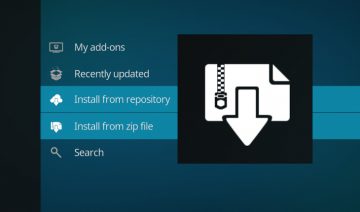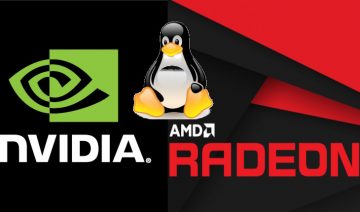Before we’re going to dive straight into each CMS attributes, let’s briefly define what a CMS is exactly:
CMS = Content Management System, is a program which allows users to edit, publish and maintain content as well as modifying it – all from a central interface.
Simply put, a CMS is basically the operating system (OS) behind the website just as Windows / Linux / Mac is the OS behind your desktop computer. More than that, the segmentation between the CMS’s is also very reminding that of the desktop OS’s. Although they are both completely different things and comparing them would be like comparing apples to oranges, in essence they are all fruits, or in this case operating platforms.
So now that we have a basic understanding of what a CMS is, the comparison part of this article will go as follows:
- History in a nutshell
- Features table
- Pros & Cons
- Conclusions
- Bottom line (Lazy readers)
Feel free to jump right away into your part of interest by clicking the above links :-)
History in a nutshell
WordPress
 Started as a fork of b2/cafelog platform in 2003, WordPress was mainly developed by Matt Mullenweg and Mike Little, and got its name by Mullenweg friend which suggested it. WordPress has started to rapidly gain market share the following year (2004) when its competitor Movable Type – the CMS used by the Huffington Post[1] (perhaps the most successful news blog to date) – changed its licensing terms which caused many of its most influential users migrate to WordPress. By 2009 WordPress became the greatest open source CMS brand.
Started as a fork of b2/cafelog platform in 2003, WordPress was mainly developed by Matt Mullenweg and Mike Little, and got its name by Mullenweg friend which suggested it. WordPress has started to rapidly gain market share the following year (2004) when its competitor Movable Type – the CMS used by the Huffington Post[1] (perhaps the most successful news blog to date) – changed its licensing terms which caused many of its most influential users migrate to WordPress. By 2009 WordPress became the greatest open source CMS brand.
Drupal
 Believe it or not, Drupal actually started as a message board by Dries Buytaert and became open source project in 2001. Drupal’s name is an English rendering for the Dutch word “druppel” which means “drop”, thus its logo. Interest in Drupal got a significant boost in 2003, when it was used by Howard Dean’s campaign for the 2004 U.S. presidential election. After the campaign ended, members of his web team continued developing and distributing Drupal technology as a company with full-time employees. From July 2007 to June 2008, Drupal was downloaded from the Drupal.org website more than 1.4 million times, an increase of approximately 125% from the previous year.
Believe it or not, Drupal actually started as a message board by Dries Buytaert and became open source project in 2001. Drupal’s name is an English rendering for the Dutch word “druppel” which means “drop”, thus its logo. Interest in Drupal got a significant boost in 2003, when it was used by Howard Dean’s campaign for the 2004 U.S. presidential election. After the campaign ended, members of his web team continued developing and distributing Drupal technology as a company with full-time employees. From July 2007 to June 2008, Drupal was downloaded from the Drupal.org website more than 1.4 million times, an increase of approximately 125% from the previous year.
Joomla
 The name “Joomla!” is the anglicised spelling of the Swahili word jumla meaning “all together” or “as a whole”. Joomla was the result of a fork of Mambo on 2005, which at that time was trademarked by Miro who formed a non-profit foundation. The Joomla development team felt that the foundation structure went against previous agreements and violated core open source values, hence, they created a website to distribute information to users, developers, web designers and the community in general. Project leader Andrew Eddie wrote a letter that appeared on mamboserver which got a little more than one thousand people to join within a day. In the two weeks following Eddie’s announcement, teams were re-organized, and the community continued to grow.
The name “Joomla!” is the anglicised spelling of the Swahili word jumla meaning “all together” or “as a whole”. Joomla was the result of a fork of Mambo on 2005, which at that time was trademarked by Miro who formed a non-profit foundation. The Joomla development team felt that the foundation structure went against previous agreements and violated core open source values, hence, they created a website to distribute information to users, developers, web designers and the community in general. Project leader Andrew Eddie wrote a letter that appeared on mamboserver which got a little more than one thousand people to join within a day. In the two weeks following Eddie’s announcement, teams were re-organized, and the community continued to grow.
Features table
The following table comes to highlight some of the most dominant and objectively measured features each CMS has out-of-the-box:
| Feature / CMS | WordPress | Joomla |
Drupal |
| Weigh | 17.2MB (zip=6.1MB) | 30.6MB (zip=9.1MB) | 12.7MB (zip=3.5MB) |
| Drag & Drop Content | |||
| WYSIWYG Editor | |||
| Caching | |
||
| Login History | |||
| Multiple Upload | |||
| Public Forum | |||
| Multi-Site Deployment | |||
| Extensions | 28,500 + | 6,000 + | 16,000 + |
Pros & Cons
WordPress
Pros |
Cons |
|
|
Drupal
Pros |
Cons |
|
|
Joomla
Pros |
Cons |
|
|
Conclusions
As you can see each one of these great open source CMS’s has its own strengths and weaknesses, but you should always keep in mind that all of them are free and mainly developed by volunteers, so they definitely deserve a big shout-out for doing that. Nonetheless in order to answer which one is the best of the three is still remaining more of a question of preferences and needs, looking back at how each CMS got developed and what where its main turning points – it seems each one got perfected at its targeted sphere and that’s where each excels. That is not to say that each of the CMS’s isn’t capable of doing what the other does best but using them for those purposes would simply be an overkill !
Bottom line
Use WordPress for blogging and other kinds of content + SEO relying sites.
Use Drupal for government or a large scale company sites when in need for database functionalities and support.
Use Joomla for small to medium company / private needs in order to make a beautiful static site displaying many different blocks and categories information.
Just in case this article left you all curious – I’m using WordPress as of time of writing this ;-]
[1] Who’s using movable type?







